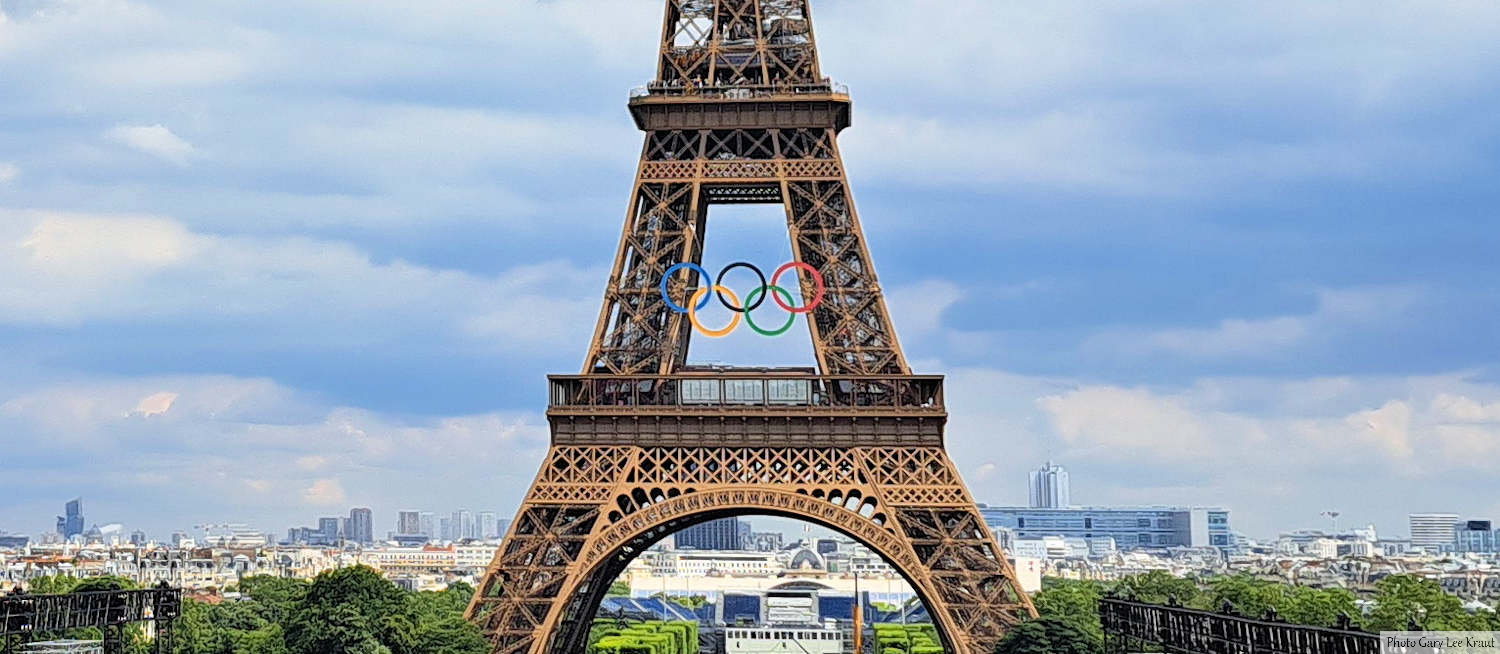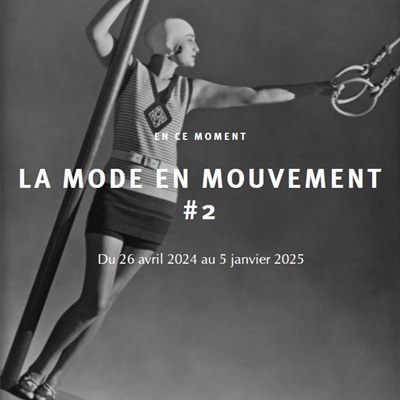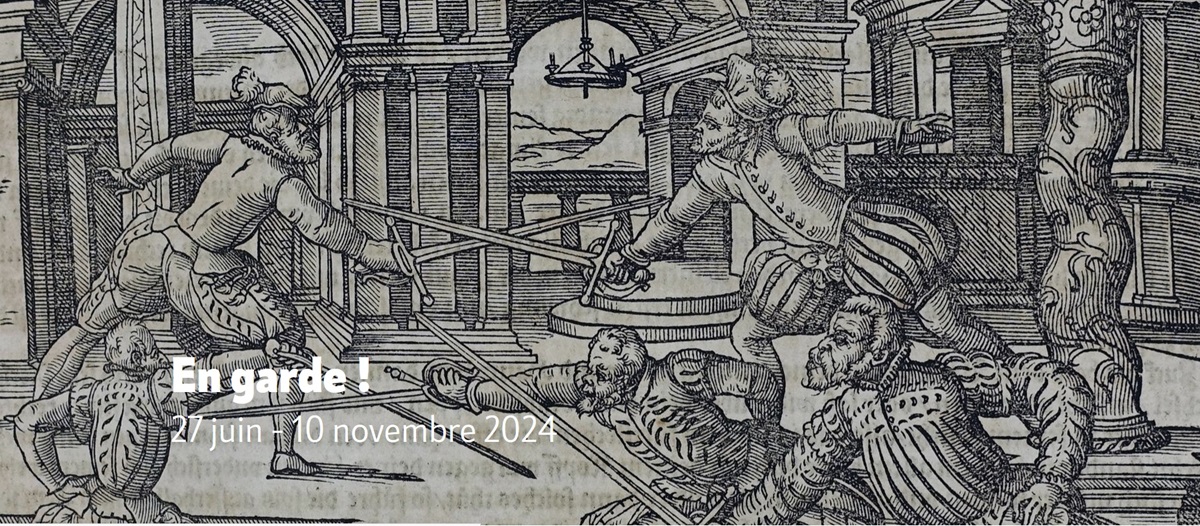
Call it Art & Sport, the Cultural Olympiad, surfing on the Olympic spirit, jumping on the Olympic bandwagon, or simply sports sells—whatever it is, France is set to break the world record for the number of sports-related exhibitions showing in a single year.
The curators of France have sports on the brain. I imagine hundreds of them gathering in a post-Covid funk at a convention at the Louvre two or three years back, trying to come up with ways to attract visitors to their museums. Suddenly, a specialist in, say, 18th-century stockings, a graduate of the class of 2008 at the Institut National du Patrimoine, stands up and shouts, “Eureka! Forget about the 150th anniversary of Impressionism in 2024, let’s all plan shows about sports to coincide with the Paris Olympics!” There follows a standing ovation and a buzz that spills over to the Champagne reception and evolves into an orgy of ideas for the Olympic crossover into cultural exhibitions in museums and other venues. Now, 2, 3 years later, dozens of sports-related exhibitions have blossomed throughout France. And you can visit all of them for less than the cost a nosebleed seat at a second-round match of beach volleyball at the 2024 Paris Olympics.
The official map of Olympic and Paralympic sporting venues also presents sports-related cultural and event locations throughout France.
Here is a selection of major and minor exhibitions in Paris and various regions of France during this Olympic year.
A Selection from France’s Cultural Olympiad
 Paris’s fashion museum, the Palais Galliera, gets into the act with Fashion on the Move #2, presenting 300 items that “explore the role of special clothing in physical and sports activities as well as the sociological factors reflected in its development.” From horseback riding to tennis to golf to bicycling, along with much sea bathing and swimming, visitors can examine “the gradual specialization of sports garments and the arrival of sportswear in people’s ordinary everyday wardrobe.” This exhibition, running until Jan. 5, 2025, follows on the heels of the first Fashion on the Move show, which pranced along similar ground.
Paris’s fashion museum, the Palais Galliera, gets into the act with Fashion on the Move #2, presenting 300 items that “explore the role of special clothing in physical and sports activities as well as the sociological factors reflected in its development.” From horseback riding to tennis to golf to bicycling, along with much sea bathing and swimming, visitors can examine “the gradual specialization of sports garments and the arrival of sportswear in people’s ordinary everyday wardrobe.” This exhibition, running until Jan. 5, 2025, follows on the heels of the first Fashion on the Move show, which pranced along similar ground.
The Pantheon in Paris, that impressive and vital church-cum-monument-to-the-ideals-of-the-French-Republic, hosts until September 29 the exhibition Paralympic History: From Integration in Sport to Social Inclusion, 1948-2024.
The Museum of Jewish Art and History in Paris presents the 1930s work of André Steiner. See the video below for a brief description and glimpse of André Steiner: The Body, from Desire to Transcendence, showing until September 22.
Also in Paris, sport and urban cultures form the raison d’être of Spot 24, a temporary exhibition space and Olympics shop located a 10-minute walk west of the Eiffel Tower. In a series of corporate-hip displays, the exhibition showcases six new or recent Olympic disciplines: BMX freestyle, skateboarding, sport climbing, surfing, 3×3 basketball and breaking. Until Dec. 31.
The National Sport Museum in the Allianz Riviera Stadium in Nice needs no Olympic theme to work up a sweat. Still, it would be remiss in not mounting an Olympic-related temporary exhibition. The result is Les Elles des jeux, which examines the place of women in the Olympics over the past 130 years. It runs until September 22.
In Lyon during the month of August, the regional CNRS (French National Center for Scientific Research) presents at the Parc de la Tête d’Or an exhibition called Sport et Science: L’union fait la force (strength through unity), examining, among other aspects, how science benefits professional and amateur athletes.
In Burgundy, the MuséoParc Alésia looks at the Olympic Games of Antiquity in Ô Sport, des Jeux pour des dieux (the Games for the gods) https://www.alesia.com/o-sport-des-jeux-pour-des-dieux/, along with a separate exhibition titled Archeology and Sport, both until November 30. The museum-park, created at the site of a major battle between Roman legions and the Celtic tribes that inhabited Gaul prior to the Roman conquest, is located 35 miles northwest of Dijon by car (or a quick side-trip while biking along the Canal de Bourgogne).
In Toulouse, the southwestern city known as “the European capital of aeronautics and space,” the title of the exhibition at the Cité de l’Espace (Space City) is unsurprisingly Space and Sport. Showing until the end of the year, it highlights the similarities between top-level athletes and astronauts.
Bordeaux naturally sought a wine angle. Whether its convincing or not (haven’t been), the Cité du Vin has mounted an exhibition that finds a connection between life in the stadium and work in the vineyards and the common challenges facing both athletes and winegrowers. Whatever. Showing until September 29.
In the Alsatian city of Sélestat, the Humanist Library, which hosts notable exhibitions related to its extensive collection of medieval manuscripts and 15th- and 16th-century printed books, presents En garde ! L’escrime, entre fiction littéraire et réalité historique (fencing, between literary fiction and historical reality). June 27 to November 10.
In addition to being well off the radar of most travelers, the Centre Historique Minier, a museum about the history of mining built on the site of an old mine in Lewarde (Upper France), 27 miles south of Lille, would appear to have a tough time finding a sporting angle. It nevertheless manages to jump on the Olympic bandwagon by exploring how mine owners, beginning in the mid-19th century, saw sports and sporting clubs as a way of structuring the free time of their employers and families with activities and a social framework that could be beneficial for their cohesion and physical fitness. The sporting exhibition continues until May 4, 2025.
La Fabrique des Savoirs, the Knowledge Factory, in Elbeuf (Normandy) is an eclectic museum dedicated to all kinds of knowledge and know-how, particularly relative to nature, archeology and industry in and around the loop in the Seine upstream from Rouen. Sports enters mix this summer with the exhibition De l’usine au stade (from the factory to the stadium), June 21 to Sept. 29, which tells about the development of sports and sporting facilities in the area from 1870 to today.
(Contemporary) Art & Sport
 Art & Sport is the unambiguous heading for 13 exhibitions of contemporary art taking place at various times from May to November in 13 cities representing the 13 regions of metropolitan France.
Art & Sport is the unambiguous heading for 13 exhibitions of contemporary art taking place at various times from May to November in 13 cities representing the 13 regions of metropolitan France.
Considering what are often thought of as two distinct audiences—the artistic and museum-going public on the one hand and the sporting and sport-going public on the other, the former considered elitist in opposition to the latter often seen as “the people”—the national cultural organization GrandPalaisRMN is supporting an array of exhibitions intended to bring contemporary art to those who don’t usually enter museums. The venues for these exhibitions are therefore sports facilities and outdoor event spaces.
A good example of the concept is an exhibition that recently closed in Nevers (Burgundy) titled Hand in Hand in Hand. Taking place at a local sports center used by the Nevers handball team, the show considered the place of the hand and the sense of touch in contemporary art. A handball stadium may seem like an unlikely place to draw a substantial audience until you consider that handball is a major sport in France. In fact, in a rare Olympic double, France’s men’s and women’s handball teams both won gold three years ago at the Tokyo Olympics.
Through to the end of June in Mulhouse (Alsace), the theme of color in contemporary art is examined at an exhibition titled Pop Up Play Polychrome, showing at the Mulhouse Climbing Center. Why there? As an echo to the colors of the climbing walls.
In Pau (New Aquitaine), in June and July, the city’s aquatic center houses the exhibition How to Whisper to the Ocean. Water is naturally the common element in works that explore with drama, poetry and humor the concept of voyages to places foreign, unknown and/or subject to climate change.
In Le Mans (Western Loire), time is the theme of the works presented at the track of the 24 Hours of Le Mans races. It’s a short exhibition, lasting only June 11 to 16, the week of the Hypercar race.
The theme of the storm will draw the eyes of visitors at the Old Port in Marseilles from June 30 to July 3.
From July 5 to September 2, the impressive equestrian center in Saint Lô (Normandy) is the venue for works on the theme of animals, with an African proverb leading the way: If an animal tells you he can speak, he’s probably lying.
The works presented from September 7 to 29 at Nîmes‘s skate park, France’s largest, will explore street life.
In Paris, from July 12 to September 9, multiculturalism is the umbrella theme at the Maison de la Conversation in the 18th arrondissement. What does conversation have to do with sport? Well, as anyone who has taken part in café culture in Paris well knows, conversation is the primary sport in the capital city, though dodging cyclists is well on its way to overtaking it. Furthermore, one of the main conversations among Parisians for many months now has been Olympic fatigue, even before the Games begin.
For the full schedule and description of (contemporary) Art & Sport exhibitions, see here.
© 2024, Gary Lee Kraut


